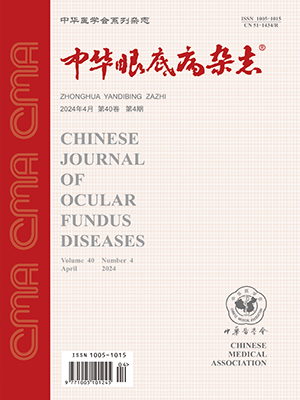Objective To observe the location of peripapillary choroidal watershed zones relative to the optic disc in the different types of glaucoma. Methods A total of 98 patients (98 eyes) with glaucoma (glaucoma group) were enrolled in this study. The eyes included 34 eyes with primary open-angle glaucoma (POAG group), 33 eyes with normal tension glaucoma (NTG group) and 31 eyes with chronic angle closure glaucoma (CACG group). Thirty-seven fellow eyes of 37 patients with monocular blunt trauma were selected in this study as control group. The differences of age (t=1.197), sex ( chi;2=3.548), average diopter (t=-1.644) between glaucoma group and control group were not statistically significant (P>0.05). The differences of age (F=2.645), sex (F=1.984), average diopter (F=2.621), and visual fields mean defect (MD) (F=0.899) between different types of glaucoma were also not statistically significan(P>0.05).Simultaneous indocyanine green angiography (ICGA) and fundus fluorescein angiography (FFA) were performed on all subjects. The watershed zones were classified into three types according to its location relative to the optic disc: in type Ⅰ, the watershed zone did not include the optic disc or could not be observed; in type Ⅱ, the watershed zone partially included the optic disc; in type Ⅲ, the watershed zone completely included the optic disc. The location of watershed zones relative to the optic disc in the different types of glaucoma was comparatively analyzed. The relationship between watershed zones, type and age, and MD were also analyzed by Pearson analysis method. Results The constituent ratio of type Ⅱ and Ⅲ watershed zones were 81.6% and 56.8% in glaucoma group and control group, respectively; with a statistically significant difference ( chi;2=8.756,P<0.003). The constituent ratios of type Ⅱ and Ⅲ watershed zones were 82.4%, 90.9%, 71.1% in POAG, NTG and CACG group, respectively. No significant differences were found between POAG and NTG group ( chi;2=1.039), POAG and CACG group ( chi;2=1.039, 1.166;P>0.05). But there was significant difference between NTG and CACG group ( chi;2=4.107,P<0.05). Significant differences were found between POAG and control group, NTG and control group ( chi;2=5.352, 10.141;P<0.05). No significant difference was found between CACG and control group ( chi;2=1.444,P>0.05). There was no correlation between age and watershed zone type (r=0.114,P>0.05). The watershed zones type of glaucoma group positively correlated with MD (r=0.354,P=0.000). Conclusion The peripapillary choroidal watershed zones in glaucoma patients include the optic disc more than in healthy eyes.
Citation: 陈伟. Comparison of peripapillary choroidal watershed zones in different types of glaucoma. Chinese Journal of Ocular Fundus Diseases, 2013, 29(3): 276-279. doi: Copy




